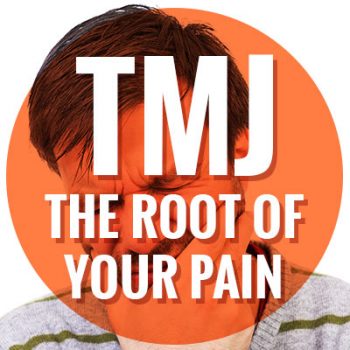TMJ: The Root of Your Pain
Posted on March 27th, 2020
 Temporomandibular joint dysfunction is a really long name… so let’s call it TMJ. That sounds more familiar—you’ve probably heard it before. Maybe some lingering pain in your chewing muscles and bones even have you wondering if you have it.
Temporomandibular joint dysfunction is a really long name… so let’s call it TMJ. That sounds more familiar—you’ve probably heard it before. Maybe some lingering pain in your chewing muscles and bones even have you wondering if you have it.
TMJ dysfunction is sometimes called TMD, TMJD, or TMJ Syndrome, especially if there seem to be a number of other jaw-related issues. Dr. Buchholtz and Dr. Garro are here to tell you more about TMJ and what to do if you’ve got it.
What is TMJ?
A sailboat requires a complex system of ropes, pulleys, and hooks to catch the wind in its sails and get moving. Your jaw is also made of an incredible team of muscles, bones, joints, and tissues working together in order to function. If anything affects any one part of these pieces in your jaw, it could lead to chronic pain and problems with the joints in your jaw. TMJ is a broad term that includes any of this pain or dysfunction.
TMJ can feel like anything from a headache to an inner ear infection, with pain moving from your face and head down to your neck and shoulders. If you have TMJ, talking, chewing and yawning can be very uncomfortable. You might also hear clicking in your jaw, feel your jaw lock in place, or experience muscle spasms.
Because TMJ has a variety of symptoms, it can be confusing to tell whether you have it. A dentist trained in assessing not only your mouth but your overall health and wellness may be especially helpful for diagnosing and treating TMJ.
Who Gets TMJ?
Did you know that more women report having TMJ than men? Otherwise, there are a few risk factors that increase your chance of having TMJ:
- Grinding Teeth: you may or may not know for sure if you grind your teeth (especially in your sleep) but one sure way to know is if your teeth are visibly getting shorter. This pressure and movement can cause jaw problems.
- Stress: if you have a stressful job or if your jaw problems crop up during especially stressful times in life, clenching your mouth is a mindless habit that can cause TMJ.
- Recent Dental Work: your body is a complete system and one part easily affects another. If you recently had dental work or any medical treatment on your face, it could be causing TMJ.
- Poor Bite or Teeth Alignment: if your mouth doesn’t close in a healthy line or if you have severely crooked teeth, it could be putting extra pressure on your jaw.
- Arthritis: joint inflammation or another connective tissue disease anywhere else in your body puts you at risk for the same soreness in your jaw.
- Injury: a blow to the face or whiplash can easily put your mouth out of line and cause TMJ.
Treating TMJ
Your best bet for long-term treatment and pain reduction is to seek professional help. A dentist can offer a number of treatments (depending on your case) that can get rid of your TMJ. Some options are:
- Home remedies like cold compresses or gentle stretching
- Orthodontics for better tooth and mouth alignment
- Gently filing a thin layer from your teeth to improve alignment
- Wearing a nightguard to prevent grinding teeth in sleep
- Dental Botox® and other muscle relaxers can help the jaw muscles loosen up, align better, and decrease pain
Don’t let TMJ pain interfere with your life. A combination of lifestyle changes and some help from your Watertown dentists can have you on the up and up for good. Contact us at Family Dental Practice today to make an appointment to treat your TMJ!
The content of this blog is not intended to be a substitute for professional medical advice, diagnosis, or treatment. Always seek the advice of qualified health providers with questions you may have regarding medical conditions.
About Dr. Buchholtz & Dr. Garro
Dr. Will Buchholtz is dedicated to improving each patient’s overall dental health. He has a comprehensive approach to helping each patient using progressive treatment techniques in the most efficient ways. As he continues to advance his education and incorporating the latest dental innovation and techniques into his daily practice, Dr. Will improves the quality of his patient’s lives. He has completed extensive advanced training in bone grafting, sinus lifts and advanced implant techniques.